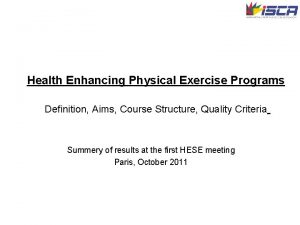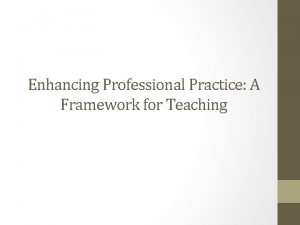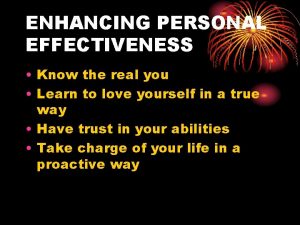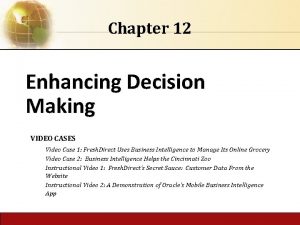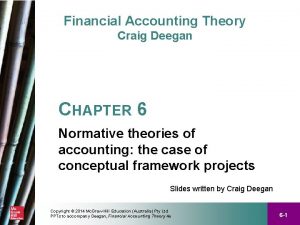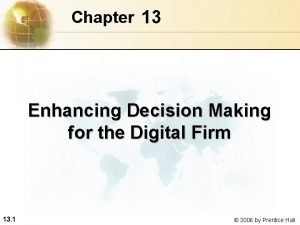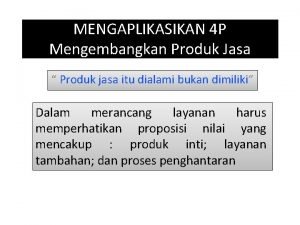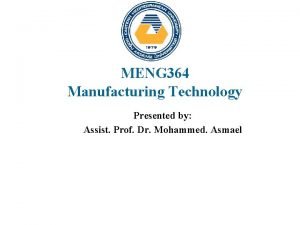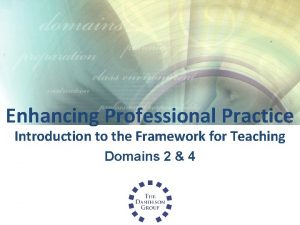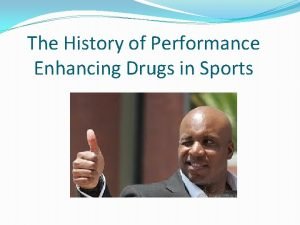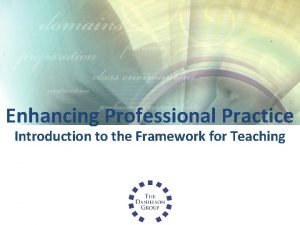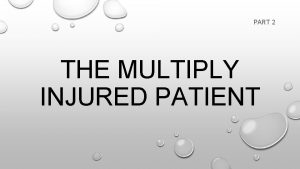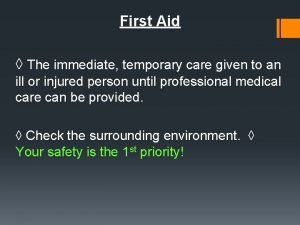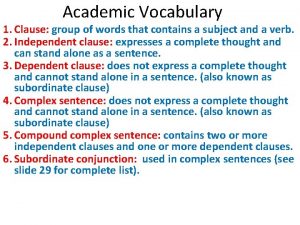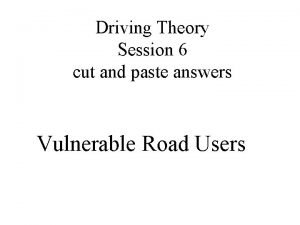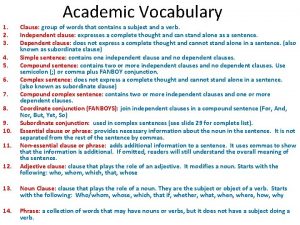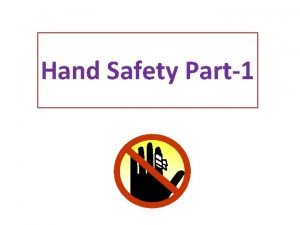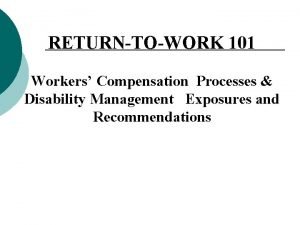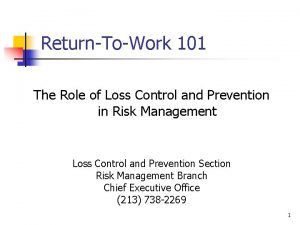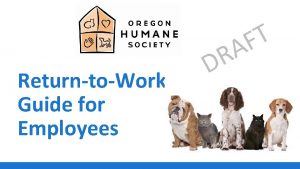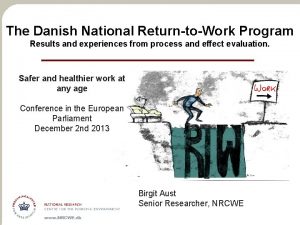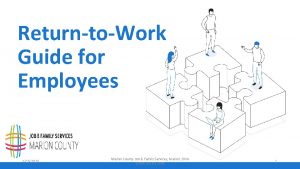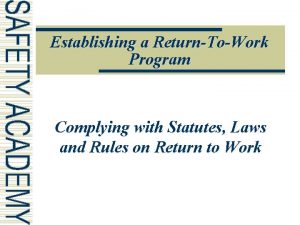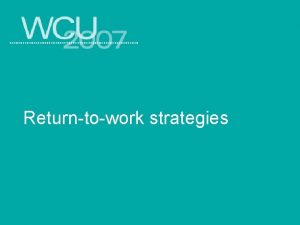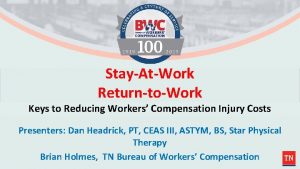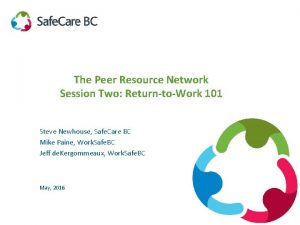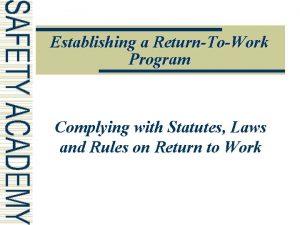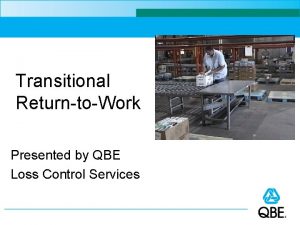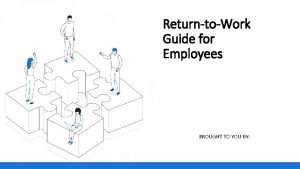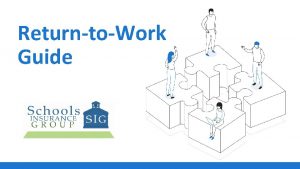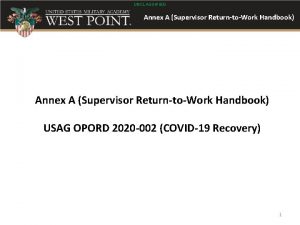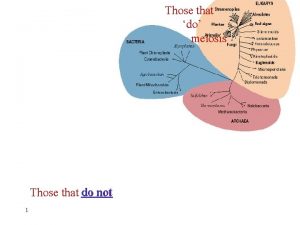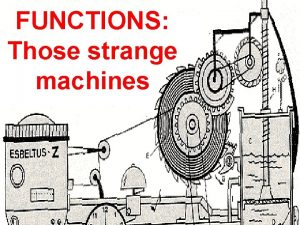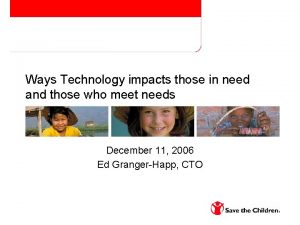Enhancing ReturntoWork Outcomes for those injured in a

























- Slides: 25

Enhancing Return-to-Work Outcomes for those injured in a MVA Gregory C. Murphy, Ph. D. School of Public Health, Latrobe University RPIG seminar, Sydney, 18 October, 2013.

Post-injury employment as the highest-ranking index of successful rehabilitation l The voice of authority: – Rusk (1949): – “Rehabilitation is the period between the bed and the job” – Brittell (1991): – “It is our responsibility to support rehabilitation to its completion. If our patients fail to attain successful employment, we have not adequately carried out that responsibility”.

RTW as tertiary prevention l Australia (particularly Victoria) performs well in primary prevention of MVAs l Secondary prevention (early intervention), more applicable to diseases, but still well done for accidents via high-quality emergency transport and emergency medicine. l Tertiary prevention is the prevention of unnecessary sequelae: the regular consequences of serious injury are withdrawal from the labour force, and social isolation. Not well done.

Research evidence for the health benefits of employment: Meta analyses l l Murphy & Athanasou (1999) – Move from U/E to E, significant GHQ effect (d = 53). – Move from E to U/E smaller, but still of practical significance (d=. 36) Mc. Kee-Ryan et al. (2005) – l Many more studies than in the review of Murphy & Athanasou, but results comparable. Paul & Moser (2009) – Results from >300 studies, yielded an effect size on “distress” of d=. 51 for employed vs unemployed

Theoretical explanations for the observed effects l Jahoda’s “functional model” (Jahoda, 1982). Distress of the unemployed is a consequence of the lack of “latent” functions of work. l In western societies, only employment can provide these latent functions in sufficient and sustainable amounts. l All employment is “good” even if working conditions are poor. (low wages, incompetent supervision, unfair HR, inefficient equipment etc. , etc. ).

As health and rehabilitation professionals, how are we going? l In rehabilitation generally, and in Vocational Rehabilitation in particular, sub-optimal RTW rates are being achieved, both in Australia and internationally. l Within local Occupational Rehabilitation (Workers’ Compensation. clients), rates of durable RTW struggle to surpass 70% (HWCA Reports), and this is in a population that has relatively few seriously disabling injuries.

RTW “achievements” in Victoria in the mid-1980 s l In the first Australian no-fault workers’ compensation scheme (Victoria’s “Work. Care”, introduced in mid-1980 s), the RTW rate in the first few years of operation was 43% and was thus threatening the financial viability of the state of Victoria (see Murphy & Foreman, 2008, and Considine, 1991). l Reasons were, inter alia, a lack of vocational focus and capability among ARPs (see Rowe, 1988)

Post-injury vocational achievements following MVA l Difficult to obtain reliable figures about what is actually being achieved because of methodological problems with many studies (e. g. , variation in how “employment” is defined); and l Lack of the use of injury mechanism (MVA vs other) in data-bases or multivariate analyses. l The unique contribution of the motor-accident rehabilitation service system to outcomes is largely unknown.

Pathways to an improved understanding of vocational achievement following a MVA l Concentrate on results from studies: – involving injury groups most frequently seriously disabled in MVA (t. SCI, TBI, ? others) – Investigating rehabilitation outcomes of those admitted to Level 1 Trauma Centres – For a various reasons, best to study mostserious injuries, not most common.

Vocational achievement following traumatic Spinal Cord Injury l Much studied because of the valuing of employment by pioneering SCI specialist. l Guttmann (1954) – His words: “It can now be concluded that the percentage of paraplegics unemployable on account of their spinal cord lesions will be extremely small. “ – His achievements: From the first 1, 000 cases treated by his Centre: – 69% employed (and a 78% majority of these were employed full-time)

Employment rates following t. SCI l Australian rates (while consistently above those of North America) are around 40% 45% when discharged patients are followed up typically around 2 years post injury (see Young & Murphy, 2009). . l Both in the United States and in Australia, about 20% of the prevalence population have achieved an actual RTW but have subsequently left that position and withdrawn from the labour force (maintenance problem).

Employment rates following TBI l Not as often, nor as well, studied. l Recent (2013) major Australian review by the N. S. W-based Agency for Clinical Innovation. – From Australian samples, at 2 years post-injury, RTW rates of 32% - 46% were reported. – Among the whole TBI population, rates are (most probably) close to or below the mid point of that range, because better rates have been reported from studies that excluded as participants those who were without employment at the time of injury.

Employment rates following TBI (continued) l Internationally, from a systematic review of 49 studies, Van Velzen et al, (2009) reported return to work rate of 41%, one – two years post injury. l From a longitudinal study of 186 patients treated by Model System Hospitals, employment rates at 1, 2, and 3 years post injury were, respectively, 33%, 37% and 42%. (Kreutzer et al. , 2003). l Unstable employment (among those in the labour force at the time of study) was 27%, and transportation highly correlated with stability.

Results from more recent studies not cited in the ACI report l Andelic et al. (2012) reported higher than usual rate of 51% employed at 1 year post injury (Norwegian study). l One of the few studies to use MVA as a variable. l Authors reported that, in simple test of association, post-injury employment rates of MVA injured were not significantly different from those of peers injured other-wise. .

Results from more recent studies (continued) l Grauwmeijer et al. (2012) reported that TBI patients from Dutch Level 1 Trauma Centres, achieved RTW rates that gradually increased up to 3 year follow up when rates was 55%. l Most recent Australian study (that of Schonberger, Ponsford, Olver et al. , 2011) reported 43% in paid employment at 1 year post injury.

Studies of long-term outcomes of Level 1 Trauma Centre patients l Dr Ellen Mac. Kenzie from the Bloomberg School of Public Health at Johns Hopkins University has the best program of research into these outcomes. l Mackenzie et al. (2006) studied patients with major lower limb trauma and followed them up at 84 mths. l Major predictors of RTW were: (a) Self-efficacy (High self-efficacy, 400% more likely RTW. (b) No involvement with legal system, 61% greater RTW.

Interesting early study of Mac. Kenzie et al. (1987) l Those with social support were almost three times as likely to have returned to work. l Rehabilitation Counsellors need to carefully assess the amount and type (emotional, instrumental, etc. ) of social support. l Especially important for serious injuries to measure support of intimate partner/family for RTW; also need to assess workplace support (co -workers, immediate supervisor) for proposed RTW arrangements.

Other related studies l Mackenzie et al (1998) studied 312 patients with extremity fractures (but excluding those with major neurologic injury, and those with psychiatric condition). l 75% of study participants had injuries from MVA. l Those with higher practical support, 20% more likely to RTW; higher emotional support, 10% more likely.

Reversing the less-than-optimal results achieved in the recent past: What we can do! l Rejection of a “stages” approach. Do not wait until the individual is “ready”. Invalidism grows after even little time away from work (particularly for OR clients). l Clinical management must be integrated with Occupational management l But, having a Case Manager or Rehabilitation Coordinator per se will not suffice, not even if appointed early. They need to conform to certain principles of effective (vocational) rehabilitation.

Enhancement of RTW l Optimise returns to pre-injury employer (most frequently reported pathway by t. SCI individuals who return to work; expect similar for TBI. ). – Facilitate communication between all key stakeholders re RTW plan development and implementation – Reinforce shared decision-making, and problem solving involving key parties such as l injured worker-workplace supervisor ; and , l G. P. - employer representatives, l Injured employee – family member/intimate partner.

RTW enhancers l Post-placement follow-up services to prevent unnecessary job withdrawal. (thus improving rates of sustained, durable employment). – Supervisor training (With Victorian t. SCI population, one-day training program for immediate supervisor was calculated to produce savings of >$1. 2 million per annum).

Return-to-work enhancers l Stress-inoculation training (Meichenbaum) to prepare the returning worker for effective coping when predictable set backs are encountered. l See Murphy & Jackson (2013), for scenarios to be prepared for.

Return to work enhancers l For those who have to seek new employer, use of effective job finding groups (Azrin’s method) and effective job-finding techniques (Bolles)

Conclusions l Looking back at what some of our predecessors achieved (e. g. Guttmann, 1954; Goble, 1963; and see Grahame, 2002), health and rehabilitation professionals can, and should, do better. . l Enhanced post-injury vocational achievement is good for the individual, reduces the burden on the health system and improves the efficiency of injury compensation schemes, thus directly contributing to national productivity,

Let’s do it! (and thank you!)
 Health enhancing definition
Health enhancing definition Enhancing the performance of grade vi-c
Enhancing the performance of grade vi-c Enhancing professional practice a framework for teaching
Enhancing professional practice a framework for teaching Enhancing personal effectiveness
Enhancing personal effectiveness Enhancing decision making
Enhancing decision making Privacy-enhancing computation
Privacy-enhancing computation Four enhancing qualitative characteristics
Four enhancing qualitative characteristics Enhancing decision making
Enhancing decision making Contoh pengembangan produk jasa
Contoh pengembangan produk jasa Property enhancing processes
Property enhancing processes Enhancing professional practice
Enhancing professional practice History of performance enhancing drugs
History of performance enhancing drugs Enhancing thermal conductivity of fluids with nanoparticles
Enhancing thermal conductivity of fluids with nanoparticles Text box formatting
Text box formatting Charlotte danielson framework
Charlotte danielson framework Multiply injured patient
Multiply injured patient An immediate and temporary care given to an injured person
An immediate and temporary care given to an injured person Ankle pull
Ankle pull Juan continued playing although he injured his knee
Juan continued playing although he injured his knee You are coming up to a roundabout a cyclist
You are coming up to a roundabout a cyclist Juan continued playing although he injured his knee
Juan continued playing although he injured his knee Vem räknas som jude
Vem räknas som jude Claes martinsson
Claes martinsson Sju principer för tillitsbaserad styrning
Sju principer för tillitsbaserad styrning Nyckelkompetenser för livslångt lärande
Nyckelkompetenser för livslångt lärande Sju för caesar
Sju för caesar
